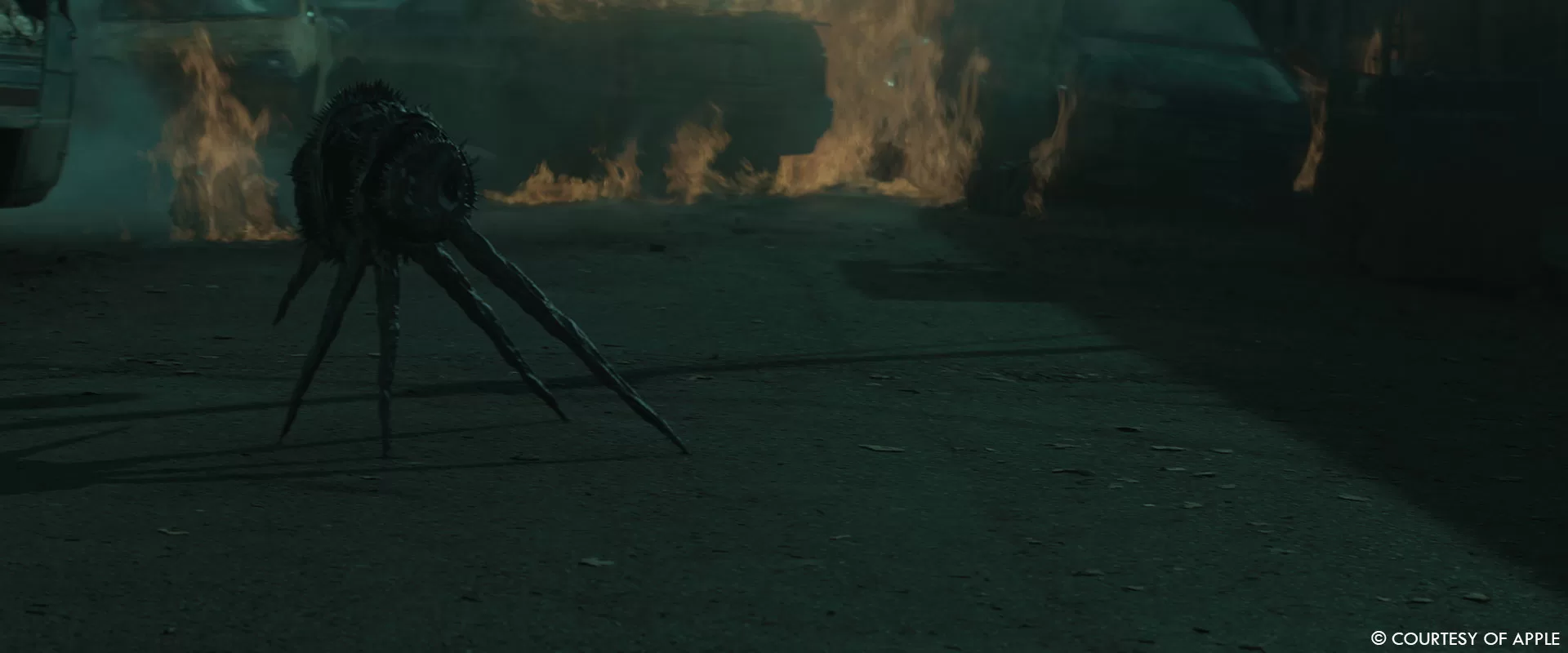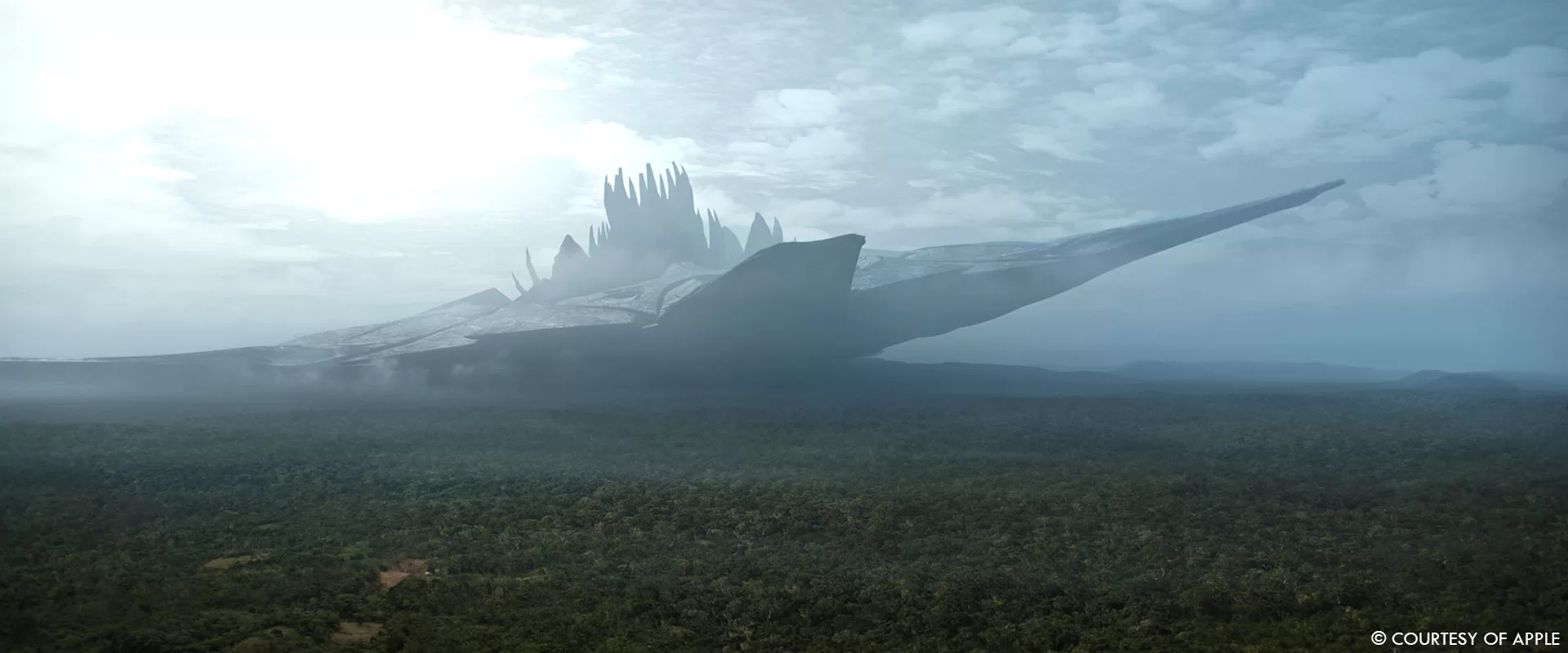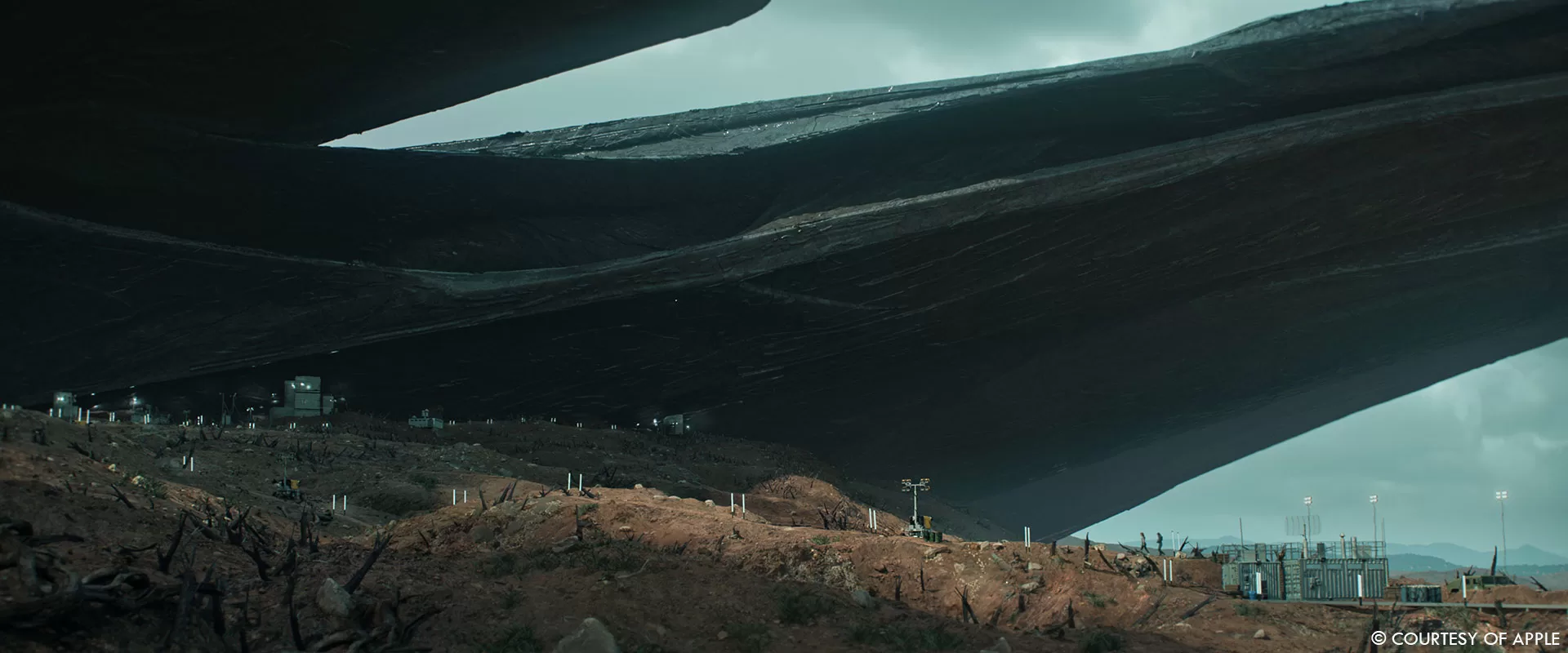Erik Henry has been working in visual effects for almost 38 years and began his career at Dream Quest Images. He has worked on many shows such as Black Sails, Tom Clancy’s Jack Ryan and Watchmen.
What is your background?
I have been a VFX professional since 1985. I’ve worked both in film and more recently in streaming television. I’ve won two Emmy awards and 5 VES awards.
How did you get involved on this series?
Simon Kinberg, the show’s creator, is friendly with Damon Lindelof who I had worked with on the HBO series Watchmen. Damon told Simon about me when he was looking for a Sr. VFX supervisor for Invasion.
How was this new collaboration with the showrunner and the directors?
The show has been a super creative collaboration with Simon Kinberg and the directors. Simon trusts me with a great deal of the creative groundwork and that’s always super rewarding for me. I like to build an ecosystem that is intelligent so the audience feels there is one alien race responsible for all things alien in the world of Invasion. It’s what I demand of the show I watch so hopefully you feel the coherence here.
What are the main changes they wanted to do after the first season?
The main thing for season two was we wanted more alien action. This season you’ll notice we start right from the first scene dropping you right into all-out war with aliens killing folks in the street and fighting that’s more slaughter than a fair fight. That is until Mitsuki arrives.

How did you organize the work with your VFX Producer?
My Producer Matt Robken is the rock that I don’t know I could ever do without. We divided the work with Matt doing all the budgeting and tracking of costs throughout, but he’s got a great eye so I always bounce things off him creatively.
How did you choose and split the work amongst the vendors?
Matt and I have some trusted vendors we always work with and then we add as needed. This season we relied on Weta FX, Framestore London & New York, ILM and one of our regulars, Raynault VFX along with many others.

Can you elaborate about the design and the creation of the various aliens?
This season we had a new alien that evolved from season one’s alien. This is the Hunter who is really like a warrior. In addition to that we have a sentient alien we call The Entity. The design for the Hunter was fashioned after a wolf of sorts, without eyes or a mouth as it doesn’t need to eat being a machine. We felt the design could be an evolution that would perform more efficiently on planet Earth. The aliens find pack killing more efficient and you’ll notice they run like wolves or a fast bear. As for the Entity we wanted something beautiful and also emotional as it needs to have scenes with Mitsuki where it acts as her former lover to manipulate Mitsuki. We designed a moving blown glass concept that could change its color with its emotions. Turns out you really can emote without eyes and a mouth.

How does their specific and changing shapes affect the animations work?
The fact that the Warrior has a skin of ferro-fluid means it can change its skin to sense the world around it as well as communicate with its brothers. Simulations were run to show the various changes on the Hunters skin as well as the surface of the Entity. We also animated a “brain” of sorts below the surface of the Entity that helps with emotional beats and to show quick reactions of pain or wariness.

Which alien was the most complicated to create?
I’d say the Entity was the most complicated because it not only had to communicate without a face, it also changes throughout the season and displays a young girl to Mitsuki before it disintegrates! Lots of challenges in this and to be honest we were working those shots until the 11th hour.

Can you elaborate about the design and creation of the new ship?
The ship we end up inside toward the later part of the season is the Mothership. The exterior was a challenge because it’s supposed to be monumental in size and seen outside our Earth atmosphere. To show its size we added twin rotor helicopters in the FG to help show its scale. The complexity of seeing an object outside the atmosphere means its look will be somewhat like our moon when we see it in daylight sometimes. The shadow side basically disappears. We felt this worked quite well to keep it feeling real on the horizon.

How did you create the massive inside environment of the ship?
ILM came on to realize the Mothership interior. The idea was that it represented the alien hive mind epicenter with the same maze-like structure we were showing, the astute viewer, way back in season one. The idea is that the walls of the maze come alive with synaptic-like energy as the ship communicates with the aliens below. Casper and then Mitsuki use this flow of information to map their way toward answers we will have to wait to understand.
How did you handle the size challenge?
While it’s true the interior needed to be vast, we start with the human scale of the walls and slowly build to a reveal of the space using a live action crane move that we extended well beyond in the comp until the actors are a mere speck in the environment.
Can you tell us more about the other environments work?
In this season of Invasion we get an opportunity to explore the inside of the downed alien carrier ship in the Amazon rainforest, inside and out. Raynault VFX had created the wide establishing shots from season 1 so we asked them to realize the closer shots up and under the ship’s massive wing-like shapes where our characters had built a research facility. These shots included human scale scaffolding near the ship to help the audience understand scale. We also had shots from inside the research facility that required an LED screen approach to reduce the need for VFX in every out of focus BG shot. However, as we started getting the look and feel of the ship to be as real as possible, we replaced most of the LED work with matte paintings. Another challenge was the interior of this alien carrier ship, the walls of which are filled with the same smaller alien drop (or crater) ships we saw in episode 102. Here, with the help of the director Alik Sakharov, and my UK based on-set VFX supervisor Martin Davison, we had fun placing the camera in wide black stage spaces and slow creeping camera moves allowed for that wonderful sense reveal after reveal. This, along with the addition of walkways and helium light balls in comp, really helped to illustrate the alien infrastructure being slowly probed by human intervention.


Which sequence or shot was the most challenging?
One of the most challenging sequences is the coordinated missile attack on the alien ships, rendered visible by the work of Mitsuki. On page it seemed simple, a few quick cuts of ships above different parts of the planet, get hit. In practice we decided this was an opportunity to really build out the spectacle so we pre-vized an elaborate sequence and had second unit shoot some people looking up as well as our own team back in California shooting a beach, and even some stock footage. Raynault put this all together and as the missiles hit and we see the ships fall in plumes of smoke, for a brief moment you feel the sense of a real victory at hand. I really liked the challenge of building this into a big science fiction moment.

Is there something specific that gave you some really short nights?
If one sequence gave me some sleepless nights it would be the Entity. As I mentioned, the Entity was already a challenge for many reasons but those complexities were inside a dark ship where its color was quite beautiful to look at. In the last episode there was a complex scene where the Entity would confront Luke and various military men including interactions like having actors thrown around by the Entity. Would the Entity look good in broad daylight? With the help of Framestore London and the stunt team in South Africa we were able to get this all to work but we were dropping the shots in while during the studios quality control period, not something that contributes to sound sleep.
What is your favourite shot or sequence?
I think my favorite shot might be in episode 207 when the Hunter aliens are stalking the kids in Paris. There is a moment when the kids freeze because they see the Hunter slowly come into view. Weta’s team had the ferrofluid shield-like head of the Hunter dancing with movement as it “listened” for a sign of the kids. I really felt the stalking movements were the best way to see the alien for what it was, a lethal killer. So cool, I really think that shot is the best alien shot in the show for showing how real the danger feels.

What is your best memory on this show?
That’s easy, I think my best memory is my crew. We worked for the better part of two years bringing this to life and when you have a great team it makes the hard times more tolerable and the good times a blast. We laughed when we needed to, and picked ourselves up when things were bleak. Can’t thank them all enough.

What is your next project?
We’re hoping that season three will be around the corner.
What are the four movies that gave you the passion for cinema?
I know it’s been said by so many others but it’s no less true for me, Star Wars is up there. But I’m also just impressed by a good drama or comedy. Love Three Days of the Condor, The Conversation, and I was just mentioning Being There for its ability to show the absurdity of politics, a real apropos movie for our time.
A big thanks for your time.
© Vincent Frei – The Art of VFX – 2023




